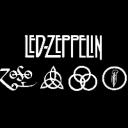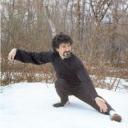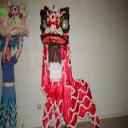Yahoo Clever wird am 4. Mai 2021 (Eastern Time, Zeitzone US-Ostküste) eingestellt. Ab dem 20. April 2021 (Eastern Time) ist die Website von Yahoo Clever nur noch im reinen Lesemodus verfügbar. Andere Yahoo Produkte oder Dienste oder Ihr Yahoo Account sind von diesen Änderungen nicht betroffen. Auf dieser Hilfeseite finden Sie weitere Informationen zur Einstellung von Yahoo Clever und dazu, wie Sie Ihre Daten herunterladen.
What's the difference between a hard & soft, and linear and circular technique?
What are hard and soft styles or techniques? Also, what is the difference between linear and circular techniques, and what is circular better for and what is linear better for?
6 Antworten
- possumLv 7vor 8 JahrenBeste Antwort
Hard is when you meet your opponent with a strike that can break or disable. Punches, kicks, elbow, knee, and head strikes are examples of this.
Soft is when you push or throw. Soft techniques are often called "large circle" techniques.
Rule of thumb: if you break something or leave a bruise, then it was a hard technique.
As to linear and circular, one may make the argument that everything is circular. I tend not to categorize techniques in terms of linear and circular. Some techniques that appear to be straight strikes (straight punch, push kick, side kick) I would generally categorize them as "z-axis" strikes, as they move from the body outwards.
The other kind of strikes, which I tend to view as "y-axis" because they move upwards or downwards (axe kick, upwards knee, up- or down-wards elbow); and "x-axis" because they move sideways (roundhouse, cross cut, cross elbow, sideways knifehand or ridgehand, etc) are really "circular" because the move about an arc at the end of a radius.
Other strikes, such as wrist, arm, shoulder, leg locks are more aptly called "small circle".
And then you have techniques that do not neatly fit into any of these categories, like chokes, escapes, and some pressure point strikes that require rubbing or squeezing (as opposed to striking). Sometimes, you can out-muscle your opponent's grip. Not a pretty or even reliable technique, but it works - and it breaks the linear, circular, hard, soft mold.
So the concept of categorizing into linear, circular, hard, soft... I find this practice academic and fine for a discussion over a beer - or even making bar bets. But it doesn't help my practice, and I would never choose one type over another for the simple reason that in a given situation there is near-infinite possible considerations.
If I were in a situation, I would not be thinking "ok, he's got my wrist; do I issue a small circle wrist lock, or a hard linear technique like a side kick?" That's just too much to think about. I would rely on instinct - a direct result of repetitive training - and not worry about what classification the technique was.
- Bob KleinLv 4vor 8 Jahren
In the hard styles you use the tension of the body to remain solid when you strike. In the soft styles, your alignment connects your strikes to the ground so you use the ground for solidity and the body can remain relaxed. Also the force comes mainly from the sequential expansion of the joints, from the ground up, through the body. The movement of an arm or leg is just to deliver the wave of force. In the hard styles, it is the movement of the body alone (mass times speed) that creates the force.
Hard styles use blocking to push the force of the opponent out of the way. In the soft styles you have to allow the opponent to strike where he wants to, but YOU move out of the way. This requires that you can sense where the striker is aiming before the strike comes out. You therefore have to be able to sense his intention before it manifests into a strike. This requires specialized training.
In linear technique the movements come out in a straight line from the origin of the force (hips or legs depending on style) directly to the target. In circular technique, each joint of the body is free to move in an aligned way towards the target. Since the angle of each joint to the target is different from a joint in another area of the body, this results in circularity in the overall movement. Just as the circular movements of a sling (weapon) contribute to a linear effect of the pebble thrown at the opponent, all the circular movements, created by the independent movements of the joints, join up to create a linear movement to the target. However, in this case, if the strike is blocked, the arm, for example, can easily circle around to continue the strike. This is because it is not the arm itself that is creating the force but the movements of each joint of the body. The arm itself is loose until the moment of impact.
Circular strikes are very useful when striking with the palm or edge of the fist, especially when hitting the head.
In most cases, there is a mixture of hard and soft, circular and linear. My style, Tai-chi-Chuan, is known for being a "soft style" but the strikes are all full force emanating from every part of the body in an explosive way. Soft doesn't mean light force. It means that you don't use any more tension than you have to or any more movement than you have to.
Quelle(n): Over 35 years teaching Tai-chi-Chuan www.movementsofmagic.com www.movementsofmagic.com/blog youtube channel - zookinesis49 - ?Lv 7vor 8 Jahren
A linear technique is a straight line technique or method of attack. Front kicks, side kicks, reverse punches, straight right hands are all examples of a linear technique or method of attack. An example of a circular technique or method of attack is a round house, a hook kick or wheel kick, or a hook in punching and they travel other than a straight line and so they generally take a little longer to get to their intended target. They also tend to travel around your opponent's first line of defense which is his arms and hands and his knees and legs.
A hard technique as opposed to a soft technique is a little harder for some to understand sometimes. Many but not all soft techniques are open handed techniques and because they are they can usually be done a little more quickly but they also carry the risk of injury to your hands and fingers if not applied correctly. All your hard techniques are close handed and they don't exposed your hands and fingers to the same risk and tend to be stronger but a fraction slower in execution. You see both hard and soft techniques in blocking and punching and striking. Brushing blocks for instance are openhanded blocks where you meet the technique from the side and brush it to the side with your fingers open but together making contact mainly with the open palm of your hand and this works quite well for punches and strikes and some but not all kicks. You also have soft strikes like knife hand strikes, palm heel strikes, and various open handed finger strikes.
However I would not recommend you try to block a round house kick with a brushing block or a leg kick. They being too strong and their path of travel being circular it is then pretty easy if you put that hand up or out there to brush them for that open hand and/or fingers to be broken. Instead you would use a close handed block for those techniques.
You also have hard techniques for punching and striking and all your punches are that and many would also classify a back-fist as a hard technique also. The other thing about this is what is your intended target. If you wanted to attack nerve centers then open handed techniques would be more effective for that because they allow you to concentrate the impact on a smaller point and more deeply. However the damage they do is very localized to that point where they make contact at. Hard techniques being stronger but hitting with the fist disperse that damage out that they do because of making contact with the fist and are generally stronger.
- LiondancerLv 7vor 8 Jahren
Hard are strikes. Kicks, punches,etc.
Blocks can be soft or hard. If I block when you punch and your arm is flying out of the way and I am not in contact with your arm after the block it was a hard technique. If I block and grab your arm and I maintained contact with your arm and it is a soft technique.
A straight punch is a linear technique. The fastest way to close a distance between two points is a straight line. That applies to techniques as well as footwork.
Circular techniques can be divided into techniques of a simple circle such as a hook punch, a roundhouse technique, spinning techniques or techniques of complex circles. A complex circle is made up of multiple curves in different directions. Like Aiki techniques. You can make your opponent go horizontal but as soon as you switch the direction to vertical or even just reversing the direction your opponent's brain has to reboot to help make the body catch up with the switch of direction and after that your opponent is always one or more steps behind busy trying to regain control letting you apply techniques.
- Wie finden Sie die Antworten? Melden Sie sich an, um über die Antwort abzustimmen.
- Anonymvor 5 Jahren
Since there is way to much to offer in such a short space, I'm not going to talk about TKD vs. Karate. I want to caution you on the 3 year old aspect of it.... As a teacher of pre-schoolers, make sure what your child is learning is martial arts. If they are not learning traditional martial arts (regardless of art) but rather they are learning stuff like how to skip, how to get out of the house during a fire, look both ways before you cross the street, etc. (all good things, but...), you are part of a very expensive daycare service. Those things can and should be taught at home, not in a martial arts school. That being said, those can be aspects of the training, but should not be the focus. On the flip side, make sure that what they are learning is age appropriate. There's no point training a 3 year old the same way you'd train a 30 year old. I have seen both extremes, so be cautious.
- Anonymvor 8 Jahren
hard: you atttack everything
soft: you attack the weak spot





